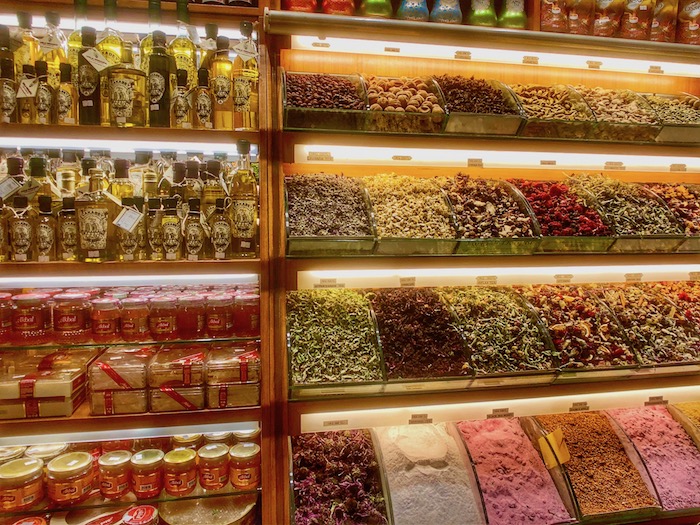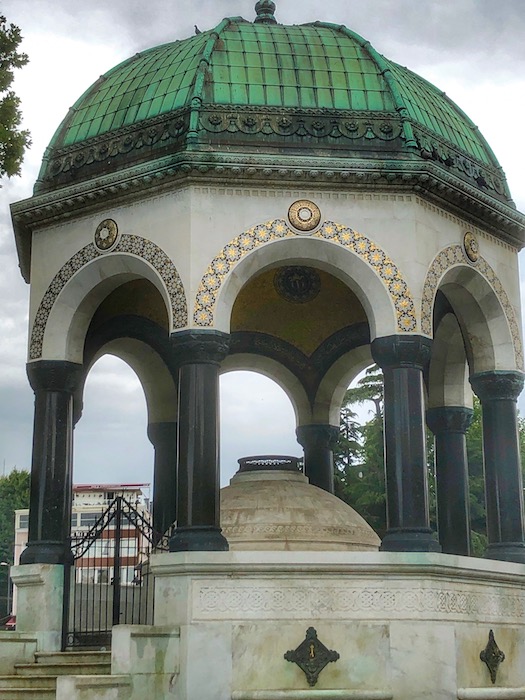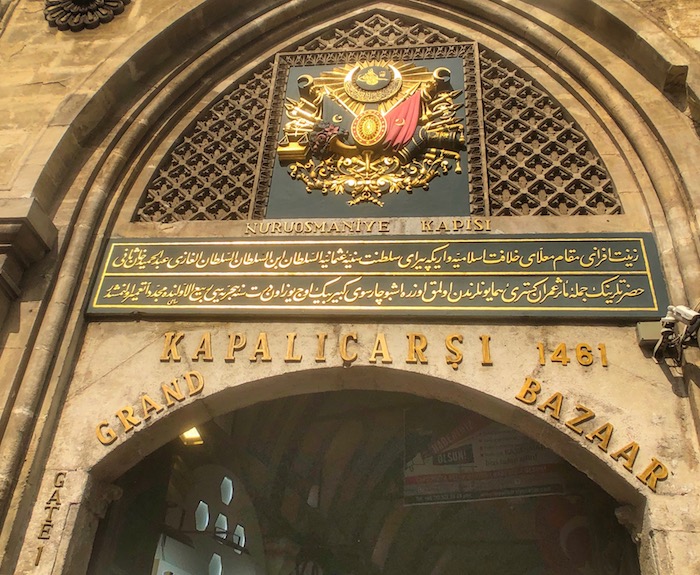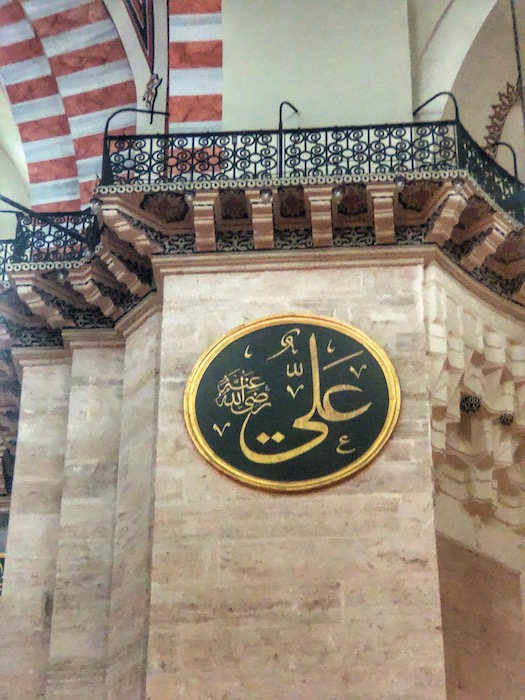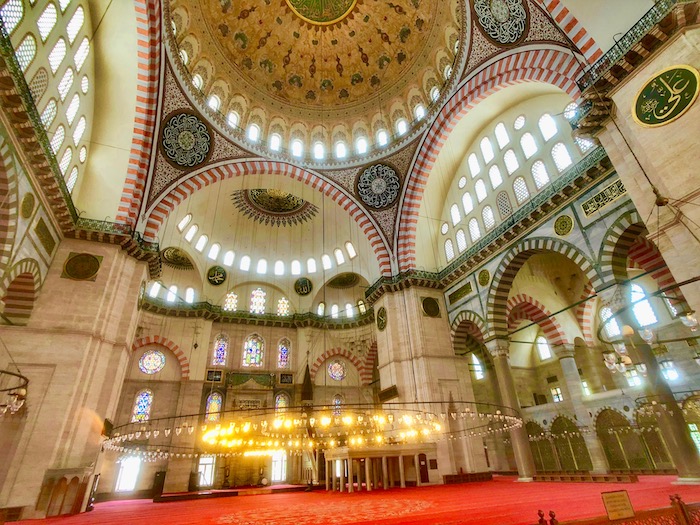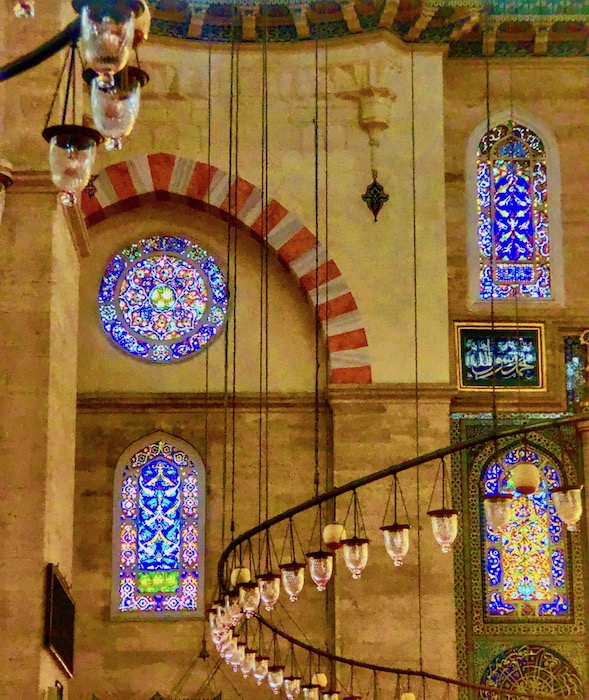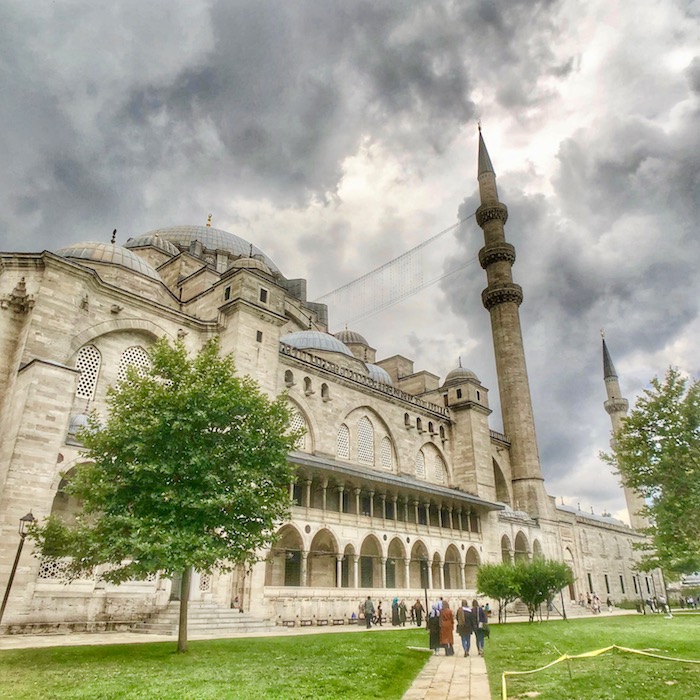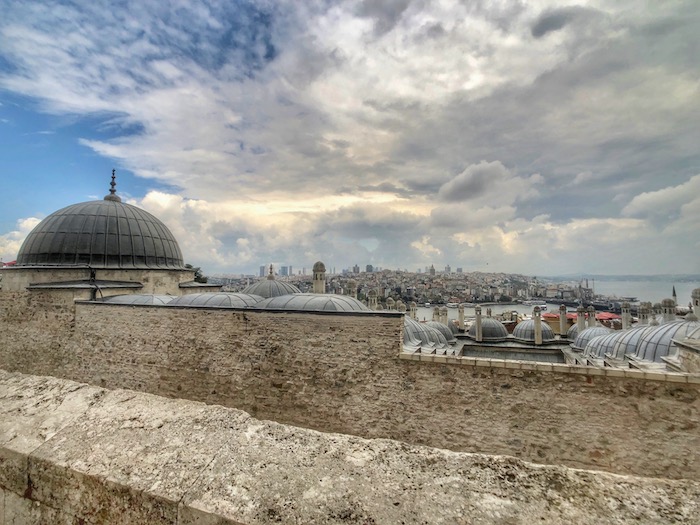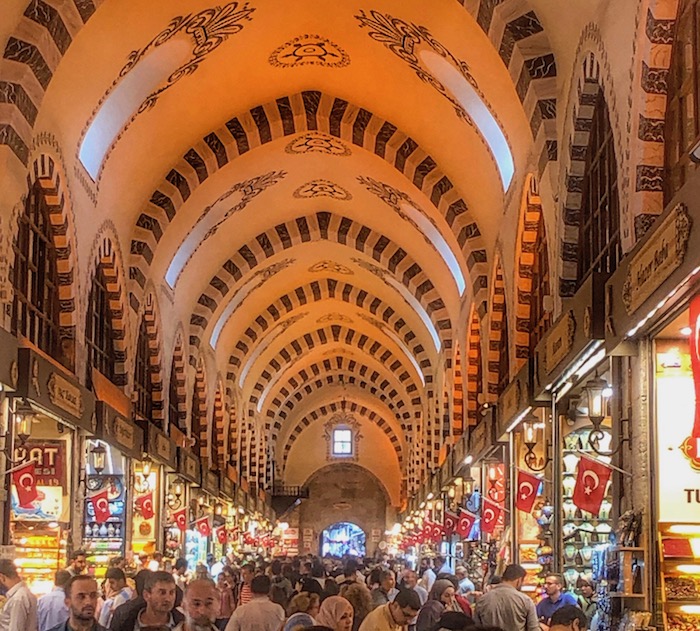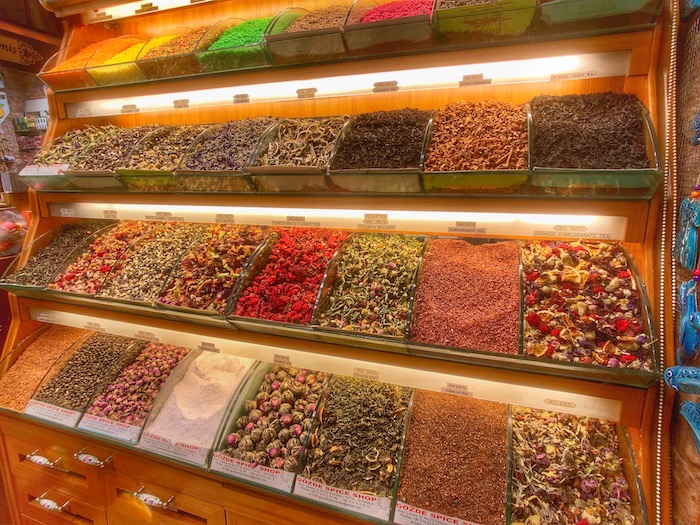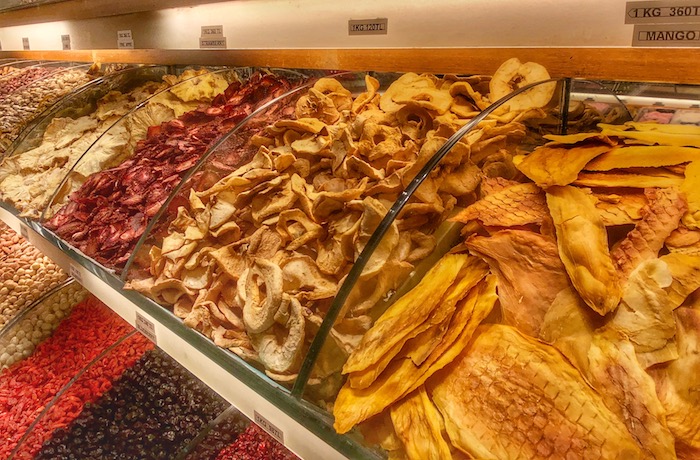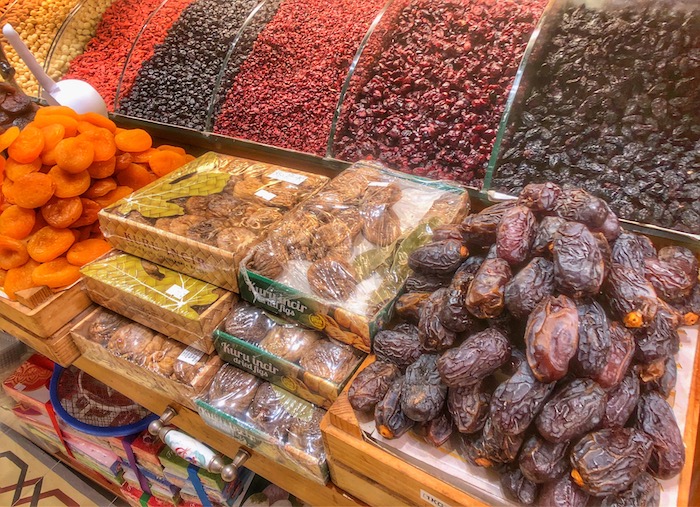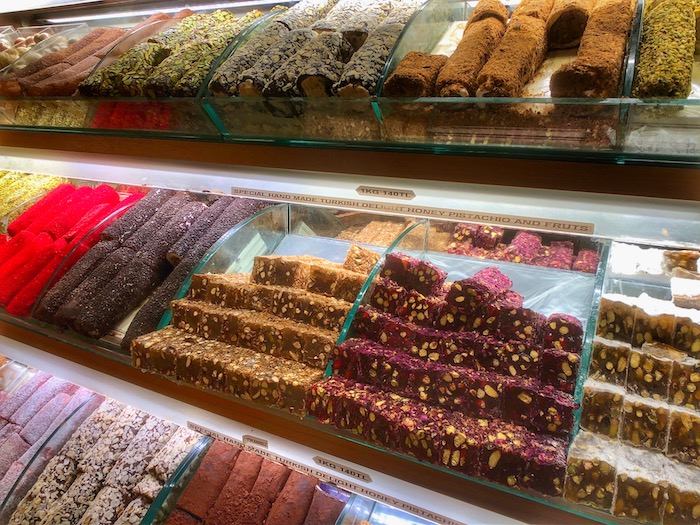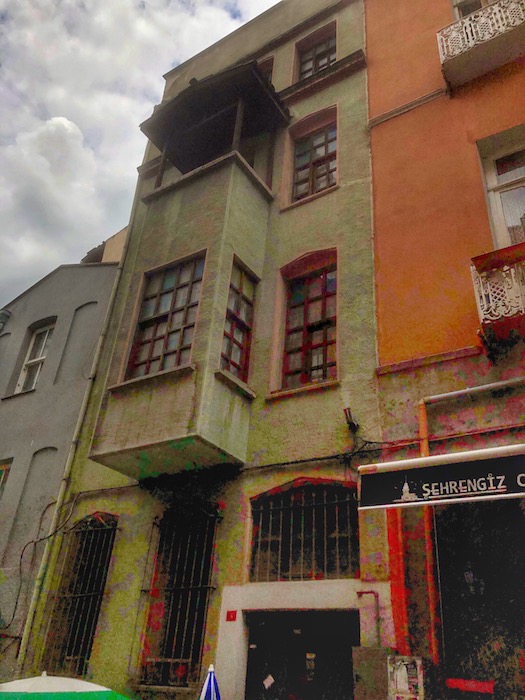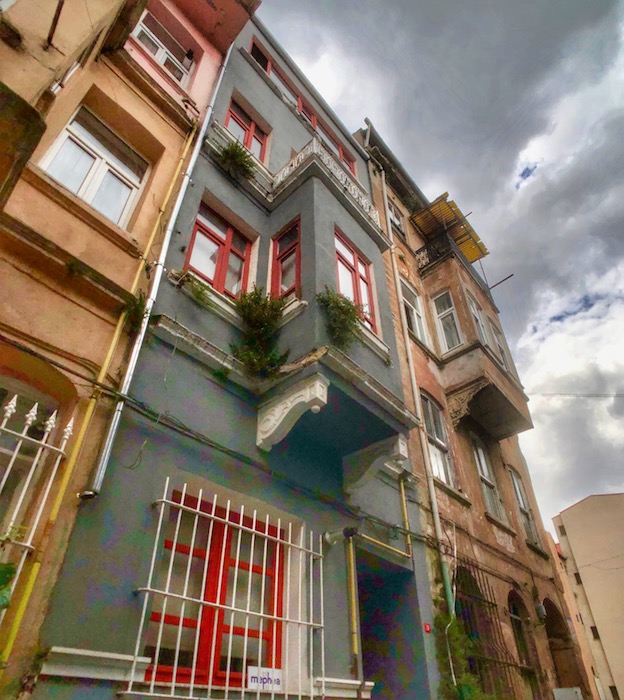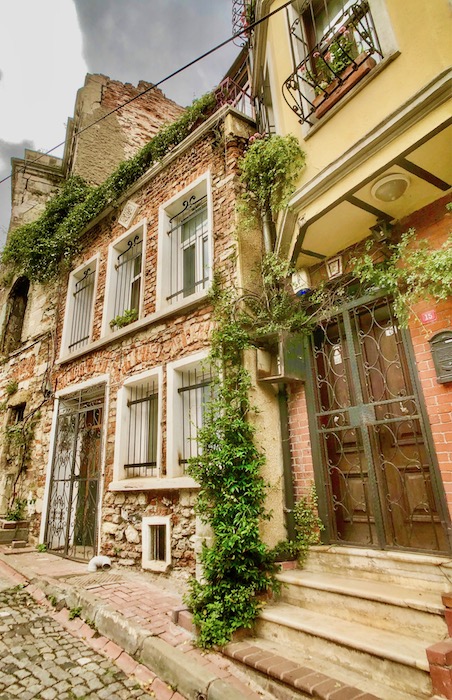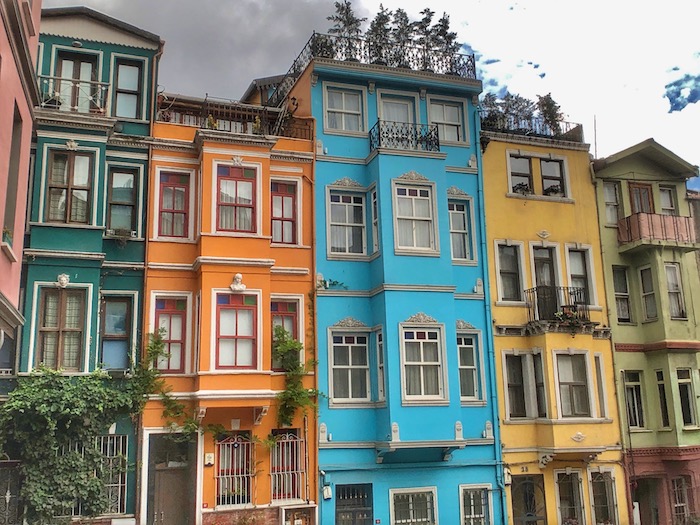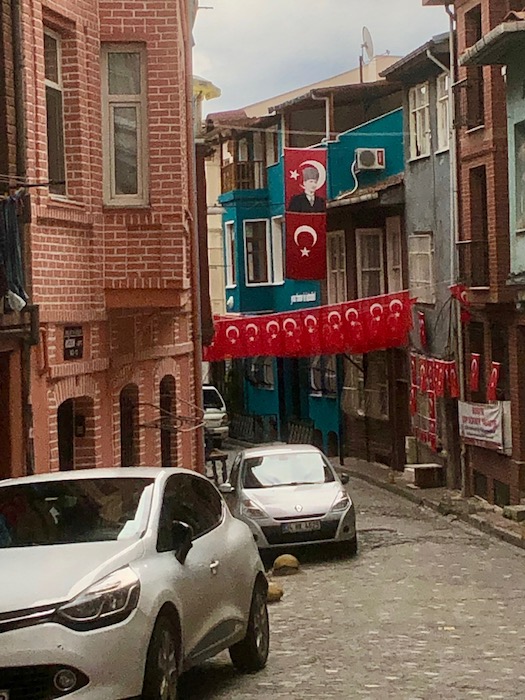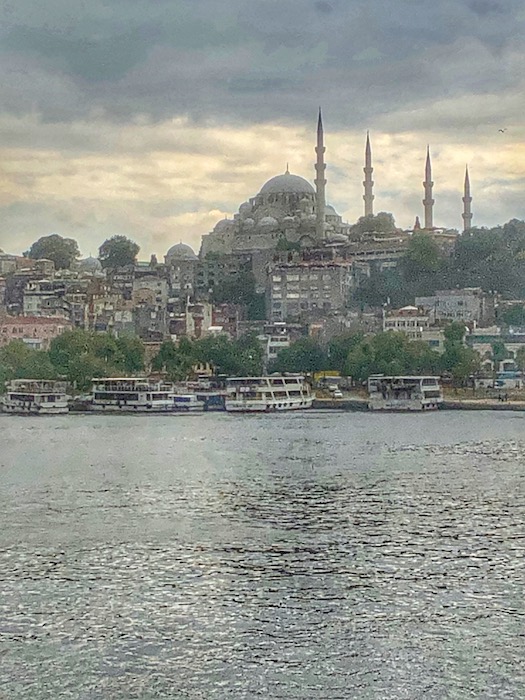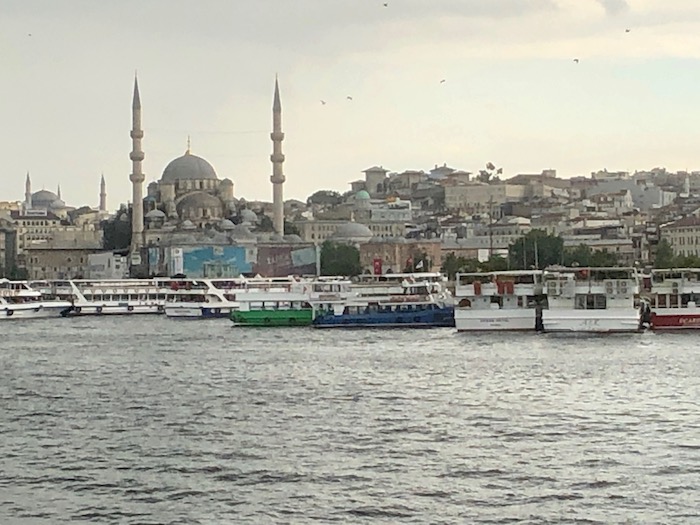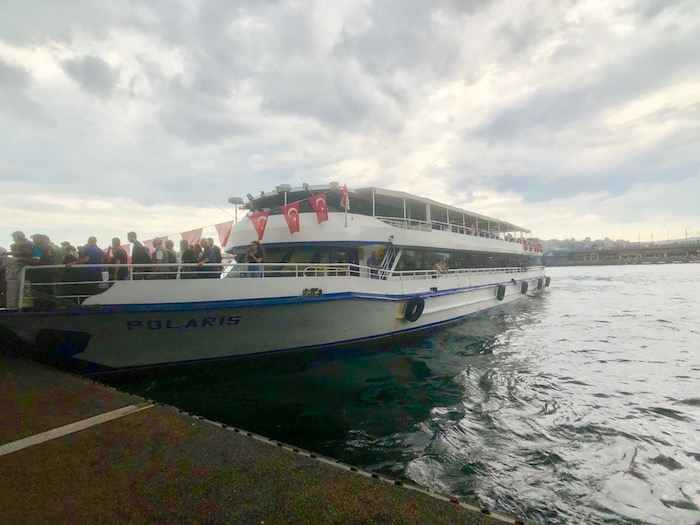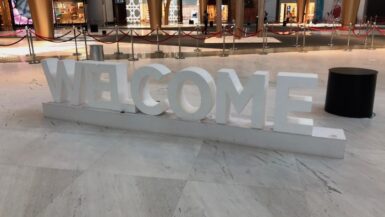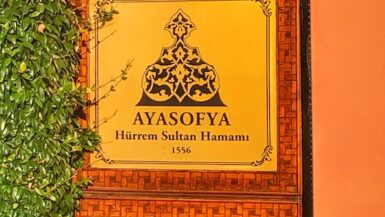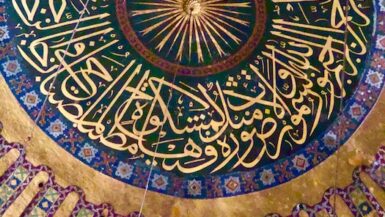July 15, 2019
The weather throughout the day was unpredictable – one-minute pouring rain, the next blue skies and sun, and yet another offered dark storm clouds. Walking through the drizzle to meet my tour guide, Google Maps took me a roundabout way causing more dampness than was necessary. I eventually made it to The Pudding Shop, a restaurant not far from the Hagia Sophia. The Pudding Shop was previously known for its rice pudding and, back in the ’60s, for its hippy clientele. From what I’m told, it’s now known for expensive, average-tasting Turkish cuisine. Pudding would have been nice, as I skipped breakfast.
Emre, the guide, from Real Istanbul Tours, gave me a warm welcome. We chatted for a bit while we waited for the other two members of the group – Dawn and Ryan from New York. She’s a writer; he’s an investment banker. They were a pleasure to spend the day with. Emre gave us an overview of what to expect, and then we were off on a tour of some of the less touristy sights. Throughout the day, we used public transportation – a bus, the metro, and a ferry. Since today was a national holiday, public transportation was free – my favorite price.
I hadn’t realized it was a national holiday, but it did explain all of the flags on display. Officially, the holiday is called Democracy and National Unity Day. Ask a younger, politically savvy person, and he/she will tell you it is a recent holiday made up by the to commemorate the national unity against the coup d’état attempt in 2016. While some may question the origin of the coup, the day is one of remembrance of the 251 individuals who died and the 2,200 who were injured.
Our day started with a walk through the Hippodrome, Constantinople’s 4th century AD chariot race stadium (Hippo = horse; drome = way). Although the spectator seating is no more, the racetrack could hold 100,000 fans. Unlike Rome’s coliseum, there were no gladiator events, just horse racing. The Hippodrome was also used for political rallies, public gatherings, and it seems a large mass public execution. Down the center of the Hippodrome are several columns and a fountain – the Egyptian Obelisk (every European city has to have one), the Constantine Column (stripped of its precious metals and stones in one of the Crusades), the Column of the Serpent, which has lost its three heads (two have since been found and are in museums), and the German Fountain, which was donated by Germany to commemorate Kaiser Wilhelm II’s 1898 visit to Istanbul (I didn’t see any water in the fountain).
Underneath Istanbul lies more than 100 cisterns that collected water brought into the city by a series of aqueducts. While the largest and most touristy is the Basilica Cistern, since our tour was going off the beaten path, we went underground in the Serefiye Cistern. Although 1590 years old, even older than basilica, it only opened to the public in the spring of 2018 after an 8-year restoration. Descending into its depths, the cistern was hot and humid despite the presence of only a small amount of water. Inside, it is eerie and beautiful all at the same time. Used as an exhibition space, there are rotating sculptures set among the pillars providing grace to the otherwise massive stone supports. Elegance underground.
As we walked further, several large mosques loomed around us – I can’t remember their names, but they were as beautiful on the outside as the Blue Mosque.
Below the mosque, we entered the Grand Bazaar. In my mind, I had pictured what we had seen in the souks in Marrakech. Despite it having 4,000 shops, which means you could get lost very easily, it seemed much more organized than the souks had been. There were lots of people due to the holiday so it was a bit chaotic and claustrophobic, but each alleyway gave way to more and more beautiful, shiny objects to see. Partway through our tour of the bazaar, we had to stop and stand in respect for the playing of the national anthem and some other nationalistic music to commemorate the holiday. Nationalism is strong here.
I am not a smoker, but I’ve always wondered about shisha since so many people rave about it as a social activity. My curiosity was satisfied when Emre took us to Corlulu Ali Pasha Madrasah, a local hookah hangout for coffee and tea after first stopping to pick up Borek for snacking. The tea was wonderful – the Turks know how to serve a great cup (actually a little hourglass-shaped glass), and Ryan said the coffee was good. Borek is a pastry made of phyllo dough wrapped around meat and cheese or just cheese. Emre said the best place to get Borek was Gel Gel – so we were sampling the best.
Then came the shisha (very low nicotine content). Neither Dawn nor Ryan had tried it before, so we were all newbies. Emre selected a melon and mint combination, which turned out to be very smooth. So smooth, that Dawn wanted to buy a hookah on the spot to take home after just a short time of smoking. Armed with our own mouthpieces, we passed the hookah around the group, got to know each other, drank tea and coffee, and ate Borek. Could have done that the rest of the morning. Although I’m still not a fan of smoke or smoking, I can definitely appreciate the social aspect of shisha. Not going to say one way or another whether it will be the last time I imbibe.
A turn through the book market brought us to Istanbul University, one of the 180 universities in Turkey. Istanbul University, however, is one of the toughest to get into – selecting individuals from the top 5-10 percent of the tens of thousands of applicants. Many of the professors from the University were jailed after the coup based on their political leanings. Due to the holiday, the front gate of the administration building was suitably draped in the Turkish flag.

High on one of the seven hills of Istanbul (just like the seven hills of Rome), stands Suleymaniye Mosque – or the Mosque of Suleyman the Magnificent. Built in 1557, this mosque is larger and, some say, grander than the Blue Mosque.
Everyone’s shoulders and knees need to be covered when entering a mosque and women have to cover their hair with a scarf (a hat won’t do). Don’t have a scarf or something to cover your necessary body parts? No worry, they have skirts and scarfs you can borrow. There were many men sporting rudimentary skirts over their shorts. The blue scarves available at all the mosques aren’t the most glamorous.
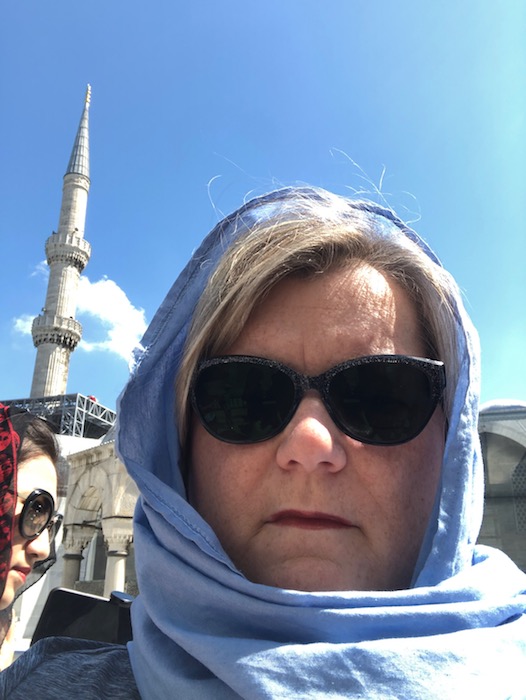
There’s something about the interior’s pastel colors that is soothing and calm, until the children start to scream – believe me, the acoustics are spot on. We pulled up a spot on the carpet and took in its magnificence. By the way, if you look closely at the chandeliers, you will see ostrich eggs interspersed with the lights. I was not aware that ostrich eggs keep spiders away, consequently, there are no cobwebs in the lighting in mosques.
Although the interior is beautiful, the outside garden faces the Bosporus with grand views.
Lunch took us down to a restaurant near the Bosporus. The gentleman who owns the restaurant is Kurdish and was a professor before coming to Istanbul – Emre loves to come to the restaurant to talk with him and says he learns something new each time. The kebabs, roasted chicken wings, and beetroot salad were pretty great as well.
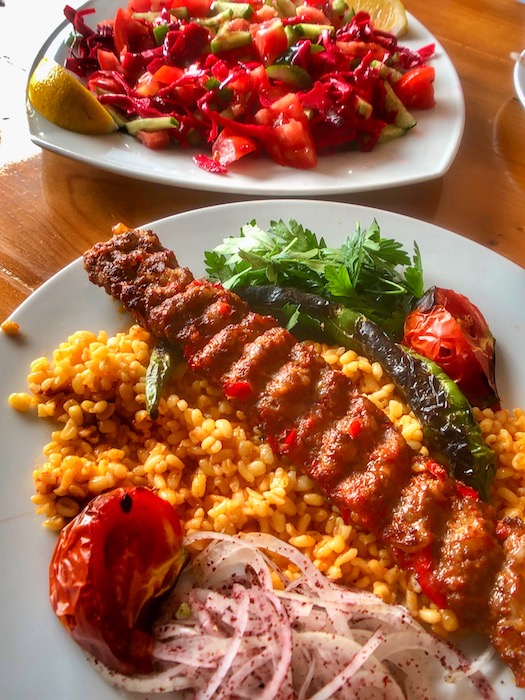
For a snack after lunch, we wound our way through the spice market – oh, the sights, smells, and sounds! Our target was a particular store with Emre’s favorite Turkish Delight. Not only did it have a wall of the omnipresent candy, but it had walls of tea, spices, olive oils, flower extracts, and saffron. The owner of the shop went a bit overboard providing samples of Turkish Delight such that I was full and couldn’t think about buying any more sweets. Dawn and Ryan bought a lovely gift box of hand-selected Turkish Delight – heavy on the chocolate and cinnamon.
An overly full local bus dropped us off in the Fener and Balat Districts, which are the old Greek and Jewish Districts. Now home to a large percentage of the Syrian refugee population (over 1 million in Istanbul), there are many houses, which are falling apart while other areas within the districts that are being gentrified. Interest rates are very high, so only the wealthy can afford to renovate homes to the UNESCO standards. You can buy a multi-level house for approximately 1 million Turkish Lira ($175,000 USD), but it would likely take that much and more for the renovations. Foreign investment is likely not wise, as the property could be repossessed should the current regime not take a liking to you for any number of reasons. It will be interesting to see what these areas look like in 5-10 years, dependent on the political climate.
We walked up and down the hills of the districts until I thought my legs were going to fall off (we only walked 6 miles total, but according to my Fitbit, I climbed 30 stories), and then down to the Golden Horn to catch a ferry. We joined hundreds of locals who were out and about due to the holiday and took in spectacular views from the boat.
And then, the tour was over. We said our goodbyes to Dawn and Ryan; Emre walked me to the metro stop. Even though the ride was free, he still had to swipe his metro card to get me through the turnstile. Then, I was off in the crush of people who stuffed them inside the tram. Four stations later, I got off at the Sultanahmet stop and walked to the street where the hostel is located – just like I knew what I was doing. Another adventure under my belt.

